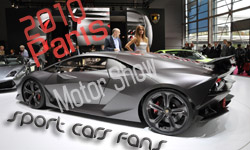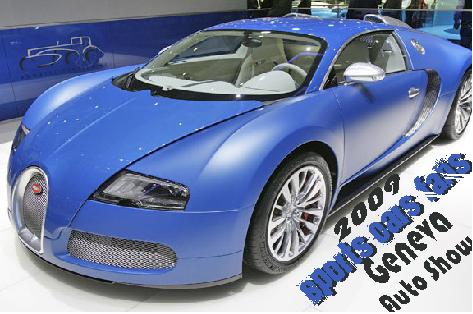2012 BMW ActiveHybrid 5
After having us over to drive its raging new M5 last September, BMW is now aiming to show just how efficient their F10 5 Series can be with the occasionally silent and rage-free ActiveHybrid 5. Whereas the ActiveHybrid X6 and ActiveHybrid 750i arrived somewhat lacking in state-of-the-art hybrid credentials, the ActiveHybrid 5 carries a true and undeniable full parallel hybrid powertrain starting with all the goodness you find in a 535i.
This ActiveHybrid 5 is essentially a 535i sedan that pollutes less, travels farther on each of its 17.7 gallons of fuel, is painted BMW's alternative-propulsion color of choice, Bluewater Metallic, and weighs 330 pounds more due to its electric motor, electric power unit motherboard and lithium-ion battery pack. Both CO2 emissions and range are said to improve by roughly 16 percent in a car that performs up to par with a 535i, so it's a likeable proposition. Sticking with the standard 17-inch wheel/tire setup and setting the Driving Dynamics Control to Eco Pro mode, that'd make the CO2 rate 240 grams per mile – an impressive stat that most Americans still don't care about – and an average EPA city/hwy combined fuel economy score of around 31 miles per gallon.
With a base price of $61,845, the ActiveHybrid 5 will cost 17.8 percent more than the $52,500 535i when it arrives at U.S. dealers in late March. For comparison's sake, the ActiveHybrid 750i costs 15.1 percent more than the 750i and the recently discontinued ActiveHybrid X6 ran a whopping 26.8 percent more than the X6 xDrive50i.
Hop in, press the Start button, and there is the passionate sound of silence. Digital dials light up, bright needles bounce right then back to the left, and there is some subtle whirring that goes on originating from the EPU somewhere deep beneath the driver's seat. That's the ActiveHybrid 5 booting up.



If we hadn't been driving the ActiveHybrid 5 over a highly dynamic route in Portugal with lots of coastal hills, maybe the car could have stayed in eDrive mode all the way up to BMW's stated electric-only top speed of 37 mph. But the road bent upward right out of the parking area, and the somewhat adapted N55 TwinPower Turbo 3.0-liter six-cylinder came on-line after only a few hundred yards of travel.
The strong hybrid equals the 535i's 5.7-second 0 to 60 dash.Attached to the front of the inline six is an additional very robust starter motor that's attached via belt to the crankshaft. Whenever the engine needs to jump to life to help acceleration and/or recharge the battery pack, this motor does the trick, and it's almost seamless in its integration and operation. It's crucial that any BMW be a smooth operator, and this setup allows BMW to maintain this image for owners who are ActiveHybrid early adopters. Not once all day did transitions between eDrive and other modes feel brusque, and there were several opportunities on our drive for clumsy switches.
You get the full 302 SAE-rated horsepower from the 535i's six, plus 54 hp from the electric motor. Of course, you can't just add the two to get total power, because the electric motor is paying attention to several functions, acting not only as giver of additional power and torque, but also as a generator to help supply energy to the depleted lithium-ion battery pack whenever needed. In the end, total possible horsepower hits 335 at 5,800 rpm, while torque from the electric motor is 155 pound-feet from zero revs, and the engine's 295 lb-ft plateaus nicely between 1,200 and 5,000 rpm. Cumulative torque when both power sources are engaged in their boost cycle and the Driving Dynamics Control is set to Sport+ is 332 lb-ft, and it starts right at 1,000 rpm and carries through to 5,000 rpm. If not for the additional weight of the electrical guts, the ActiveHybrid 5 would hit 60 mph in just 5.3 seconds. As it stands, the strong hybrid equals the 535i's 5.7-second 0 to 60 dash.

Presumably, one buys a hybrid to drive in a frugal and conservative way. Instead of treating the accelerator like a bug to be mashed underfoot, most hybrid drivers feather it like a sewing machine. On the other hand, not a day goes by when we don't see a few drivers in their precious Toyota Prius ecomobiles tear-assing through traffic, overtaking Porsches and generally defeating the entire purpose of hybrid ownership. So, what do we know? Well, we do try to obey the unspoken hybrid rules of a more kind and gentle approach to driving. The ActiveHybrid 5, as with all BMW 5 Series models, is perfectly pleasant in country two-lane mosey mode.
So, once we assuaged our motoring guilt, we then moved on to driving this Bimmer on these glorious Spanish roads in a manner in which we are accustomed: sport. In short, the ActiveHybrid's added weight is definitely felt, but then so is the added power and torque from the electric motor. As we insinuated before, things kind of even out, and you're left with something broadly similar to a standard 535i. This is exactly what BMW says it is hoping drivers feel, so they can rest easy in our assessment.




It's a pity that the aero design Streamline 18-inch wheels are an option, since they have clearly been designed to go with this car. Shame on you, Munich. The standard 17-inch wheels with their low rolling resistance tires are a significant contributor to the overall efficiency of the ActiveHybrid 5, and these slick 18-inchers take away a smidge of the car's green credentials. Even so, we prefer them both dynamically and aesthetically.
Inside, the interior – apart from the occasionally quiet electric drive times – is what we've come to expect while sitting in a 5 Series cabin. Our test car's leather wasn't BMW's habitually sober shade of gray, which helped brighten our mood. Our tester was fitted with the optional sport version of the eight-speed automatic transmission plus sport steering wheel with shift paddles, and so there was some additional get up and go on hand.
The interior's most noticeable difference arrives courtesy of the 9.2-inch iDrive screen that displays graphics showing the current state of the car's hybrid powertrain. The screen is where you see what mode you're driving in and where you keep tabs on DDC settings as well. It's here where you can select the optional ultra cushy Comfort+ mode and float through the clouds you're helping keep free from acid rain.




What is most potentially revelatory in the ActiveHybrid 5's functionality is the integration of what BMW is calling "Intelligent Energy Management" into the sat-nav. There are a few types of this next-generation brainiac driving software in development around the world, and we've already tried some. IEM works with the car's GPS, taking into account the detailed parameters of the exact road and landscapes on your route to optimize the car for efficient running. For example, by recognizing a steady downhill run, IEM can instruct the motor's generator function to charge the battery without depleting the car's speed.
The best fuel economy we realized was 25.6 mpg.Naturally, the system's usefulness depends on exactly how much of this detailed topographic and infrastructure information has been made available by various federal and state entities. It's no coincidence that this information is now readily available in Germany – right down to small dirt farm roads. The U.S., however, has a ways to go, as you might imagine. In fact, there's a ways yet to go on IEM mapping in Portugal, too, but this technology is still a first for production cars.
Given the wild up and down swings of the routes we drove, the best fuel economy we realized was 25.6 mpg, and that was while driving like the most tender-minded motorist in the Garden of Eden. This is respectable for a 4,420-pound (fluids and driver aboard) executive sedan under these road conditions. There were a few points along the route where we managed to find the delicate sweet spot of the accelerator pedal while in the DDC's Eco Pro mode, and we were able to coast with the internal combustion engine decoupled – essentially eDrive – at speeds between 80 and 90 mph on rural highways. The limit for this is 100 mph and it is a worthwhile sensation to experience.

But how is any of this really better than the 4,145-pound, diesel-powered 535d with its 308 hp and 465 lb-ft of torque? The 535d averages equal or better real world mileage per gallon, emits a bit less CO2 per mile and, by our math, costs what would be around $5,000 less. Is this simply the finest efficient alternative for markets that by and large reject diesel?
Regardless, we all know that hybrids effectively are the American diesel market – and vice-versa in Europe – at least for the time being. We definitely like the ActiveHybrid 5 in the general sense; it's perhaps the finest execution of a high-end everyday driving hybrid that we've tried yet. But will it sell well enough to get us to shut up about BMW's remarkable diesels? If the general market impact realized by the previous two ActiveHybrid models is any indicator, forgive us if we aren't jumping out of our socks after staring at BMW's business case. We certainly tip our hats to Munich for their best hybrid yet, but the Germans have their eyes on owning another kind of green awareness that goes beyond hybrids.
Our suspicion is that BMW is using its ActiveHybrid models as something of a (admittedly quite capable) time-filler while the world waits for the launch of its ultra-efficient i3 and i8 models. In fact, we wouldn't be surprised if BMW knocks us out with a Super Bowl ad or two next year for these more significant and genuine efforts.
2011 Volkswagen Jetta TDI: January 2012
Stellar fuel efficiency is still the name of the game when it comes to our long-term Volkswagen Jetta TDI, as it's averaging well over its EPA-estimated 30 city and 42 highway miles per gallon in our hands. In fact, with a deft throttle foot, it's not terribly difficult to crest the 50-mpg plateau on long, steady-state trips.
The oil-burning steed recently made the trek from Southern California to the Phoenix, Arizona area so that our resident photographer, Drew Phillips, could make sure we got all the right shots as we lead-footed our way around the Bondurant circuit with the Chevy Camaro ZL1.
Parking the Jetta TDI next to the Camaro ZL1 was an interesting exercise – it's hard to imagine two vehicles more diametrically opposed than these. And, needless to say, moving directly from 580 supercharged horsepower in the ZL1 to just 140 horses in the VW took a bit of right-foot recalibration.
The good news is that, with 236 pound-feet of torque on tap, the Jetta TDI is fun to drive in its own right. Short-shifting the six-speed manual gearbox to keep the diesel mill in its sweet spot produces the most satisfying experience in the Jetta, and it allows you to feel the rush of torque as the turbocharger gets a hold of the spent diesel fumes, pushing your body into the seatback.




Since this is my first stint behind the wheel of our long-term Jetta TDI, I'll take a moment to echo the sentiments of our past drivers. First, the interior of any 2011 Jetta is a big letdown for anyone who's sat in previous efforts from VW, with wide expanses of hard black plastic and barely any flair or actual style to break up the monotony. The vinyl coverings of the seats make your back sweat something fierce, especially if you're in the midst of a long slog on the highway. We long for some nice plaid fabric. The start/stop button is very oddly placed and feels like an afterthought. On the plus side, the in-dash LCD is nicely crisp and, for the most part, easy to use with its touch-screen interface.
And, of course, it's way too easy to stall the TDI engine in first and second gears. There seems to be some programming in the engine's electronic brain that unexpectedly shuts it down entirely if you dip past a certain RPM threshold. If that's necessary for the longevity of the powerplant or for emissions reasons, we understand, but it's still a very irritating and un-diesel-like trait that every driver will need to adapt to.
I've only spent a few weeks with our long-term Volkswagen Jetta TDI, and will touch more on what it's like to live with on a day-to-day basis in next month's update. In the meantime, I'll revel in the knowledge that a car needn't be a penalty box to post exceptional fuel mileage.
First Ride: 2012 Tesla Model S Beta
 Tesla had a big weekend. Some 1,500 Model S hand-raisers and their +1s descended on the company's recently acquired NUMMI plant in Fremont, CA to see where their $5,000 deposits have gone. The event, which served as both a product extravaganza and a subtle reassurance, sought to prove that the Model S is well on its way to production. And part of the program included rides in three Model S betas.
Tesla had a big weekend. Some 1,500 Model S hand-raisers and their +1s descended on the company's recently acquired NUMMI plant in Fremont, CA to see where their $5,000 deposits have gone. The event, which served as both a product extravaganza and a subtle reassurance, sought to prove that the Model S is well on its way to production. And part of the program included rides in three Model S betas.
As Tesla was keen to point out, showing off a prototype – even one that's 80-percent complete – is relatively unheard of in the industry. Regardless, the EV upstart invited a handful of journalists to go for a brief spin in the passenger seat of the betas. How brief? Less than five minutes.
So... don't expect to find any mind-blowing revelations, 10/10ths impressions or thorough interior dissections. Here's all you need to know: It drives, it steers, it stops, it's practically – and predictably – silent and the interior tech is enough to make gadget nerds forget about the lack of an iPhone 5.
Of the three betas on hand, two were developed for fine tuning the interior and one was set up for rides. There are currently five betas undergoing testing, all of which were built at a contract plant in Detroit and not at the newly refurbished, ex-Toyota plant in Northern California. That said, an extensive tour of the facility revealed that Tesla is almost completely set up to begin Model S production this January before deliveries begin in the middle of next year. The plant currently employs around 180 people, with that number set to hit 250 by the end of the year and then swell to 500 when at full capacity. All in, 300 to 400 people will handle drivetrain production and by 2013, roughly 1,000 people will work between the powertrain and chassis facilities.

So yes, Tesla can build them. And after spending a few hours around the Fremont plant, much of our skepticism about Tesla's abilities to bring the sedan market were laid to rest. They've pulled in equipment and talent from around the world (Germany in particular) to make a modern, world-class facility. And now we get to sample what they'll be building.
Considering this is a prototype, we're suitably impressed with the fit and finish both inside and out. We're sure that Tesla was sweating the details in the run-up to this past weekend's festivities, and the tight gaps in the body panels and general exterior polish of the betas was proof the Tesla can at least get a handful of sedans ready for the spotlight.


Inside was just as refined, save for a few crudely fashioned, but barely noticeable, bits of trim and a transmission stalk and window switchgear pulled from Mercedes-Benz. The backseat proved to be both comfortable and spacious enough to enjoy a 15-minute presentation on the infotainment system, and while our request to sit in the rear-facing jump seats was denied, we were just pleased to see them included on one of the testers.
On the infotainment front, Tesla is using a 17-inch multitouch display, with a persistent climate control interface at the bottom (good for muscle memory). It's just as massive in person as it is in photos – it's essentially two iPads worth of screen real estate – and provides drivers with Google Maps navigation, streaming Internet radio, local music playback, web browsing (HTML5/Webkit-based) and sunroof controls through an infrared touch system. Just like everything else with the Model S, it's still in prototype form, with a capacitive screen set to replace the IR version and the Linux-based OS and its proprietary user interface skin to receive more tweaks between now and the on sale date next year.
That said, it's largely glitch-free, and you can check out the video below for a full walk around of the system, including the configurable instrument panel behind the steering wheel and iPhone app that keeps track of charging and location, along with the ability to control the EV's climate remotely.
When we initially walked up to the passenger-side door, we tried to push in the flush, chrome door handle as we would open an Aston Martin. Nothing. A second later, the motorized handle slowly protruded from the door. A neat – if superfluous – party piece.
We quietly pulled away from the staging tent as our engineer-turned-chauffeur attempted to shove a fistful of wires behind the panel in the center compartment. "Obviously customers won't see this." Fair enough. Let's get underway.


The first run was through a coned-off section of the receiving bay (not fair to call it an autocross course) where the Model S resisted body roll thanks to a combination of its air suspension and low center of gravity provided by the flat battery pack spanning the passenger compartment. Our driver, who races Lotuses on the weekends, didn't push too hard, but wasn't afraid to mash the pedal as we eerily and rapidly accelerated towards a small, banked high-speed stability course, putting out all 306 pound-feet of torque to the wheels.
When the driver comes off the throttle, the brake regen is far more subtle than in the Roadster, failing to shove us into the seatbelt and doing little to upset the balance of the Model S when slowing in a straight line.
Out on the track inherited from Toyota, we kept a quick pace through the first section of the oval, and then accelerated fully down the back straight, hitting an indicated 103 mph before braking lightly into the next 180-degree bend. After three similar runs, we came away impressed with both the planted sensation afforded by the low CG and elongated wheelbase, the suitably smooth ride and the now-expected, yet still disconcerting, lack of racket inside the cabin. But naturally, until we can get some time off the test track and feel that wheel between our hands, we'll remain skeptically impressed from afar.
Who isn't skeptical? Hundreds of people from the Bay Area, along with hundreds more from across the country and around the world, all of which have put cash down to be one of the few with a Signature Series Model S. Potential buyers flew in from as far away as Tokyo, Denmark and Switzerland to be part of this weekend's event, including one gentleman from Iceland who inked a deal to purchase 100 examples for his car sharing service. Fittingly, he signed the papers on the hood of a Model S beta Saturday night – the same sedan we ran around the track less than 48 hours later.
2011 Hyundai Sonata Hybrid

The auto show transition seemed to happen in a flash. One year, automakers were jockeying for dealer traffic with high horsepower, rear-wheel-drive retro rides, and the next year, each one of them ushered in a hybrid or electric vehicle. The paradigm shift was a welcome sight for car buyers wanting to shrink their carbon footprint and save money on fuel, but the majority of those products were years from production. Fast-forward to 2011, and the variety of fuel efficient transportation on offer in the industry has improved quite a bit, including this sleekly styled mid-size offering from Hyundai.
The Sonata Hybrid may have taken longer than expected to hit the market, but its lithium-polymer battery pack and host of fuel-saving features have given Hyundai 35 miles per gallon city and 40 mpg highway fuel economy numbers to flash before consumers. And the Sonata Hybrid isn't battling the competition on fuel economy alone. It also features attractive styling that sharply differentiates it from non-hybrid Sonata models, while also carrying an MSRP thousands of dollars less than the Toyota Camry Hybrid and Ford Fusion Hybrid.
We spent a week with a modestly equipped Sonata Hybrid, but rather than going light on the pedal to gather up as many Eco points as possible, we drove it like we would any mid-sized sedan to see if it could hang with the daily drudgery of suburban life.
Our Hyper Silver Metallic tester carried a very reasonable price tag of $25,930 (plus $720 shipping), and Hyundai kept that MSRP low by adding only floor mats ($100) and an iPod cable ($35) to the options list. Fortunately, the Sonata Hybrid already comes equipped with a boatload of standard features, including a six-speaker sound system with USB and auxiliary inputs, Bluetooth hands-free connectivity, automatic climate control, headlights with LED accents and a 4.2-inch LCD trip computer/hybrid technology display.



"Hybrid" and "low MSRP" generally don't go hand-in-hand, but the $25,795 base price of the Sonata only strengthens its case. This Hyundai also proves that hybrids don't have to be stodgy pods to achieve mpg bliss. The same Fluidic Design that's been a hit with the Sonata Hybrid's gas-only sibling looks just as good with a 30-kilowatt electric motor under the hood. And Hyundai hasn't simply slap on some Blue Motion badging to differentiate its hybrid offering from the hot-selling standard Sonata.
The biggest adjustment comes in the form of a gaping grille that looks like a whale shark on a plankton feeding frenzy. Further aero improvements come in the form of tweaked bodyside moldings and a more sharply truncated rear end with unique 'atom' element taillamps. In total, exterior engineering adjustments result in a drag coefficient that drops from .28 to an outstanding .25, the same number achieved by the benchmark Toyota Prius.
We dig the fact that the Sonata Hybrid looks quite a bit different than its sibling, and the Bill Nye taillights are something to behold. Heck, even the Blue Motion badging looks cool. For our money, there is one hybrid-only touch that just has to go: the standard 16-inch alloys. We're not sure what Hyundai's designers were going for here (at least beyond aero supremacy), but they ended up with a set of wheels that draws Blade-Runner-meets-Salad-Shooter comparisons. Luckily, Hyundai offers optional 17-inch wheels that look remarkably classier than the ones seen here. Unfortunately, the upsized wheels can only be had as part of the Premium Package, which will set buyers back another $5,000.




Nasty wheels aside, the Sonata Hybrid is a looker, and the interior isn't hard on the eyes, either. Hyundai has decided to carry over the same interior from the standard Sonata, save for some Blue Motion badging and the aforementioned 4.2-inch display. That means hybrid buyers get the same spacious cabin flush with attractive curves and soft-touch materials on the dash, doors and center console. Seats are comfortable and appropriately bolstered as well, and the driver's seat is power-adjustable. Another big plus comes in the form of a standard USB port and Bluetooth connectivity that quickly and easily syncs to a Bluetooth-enabled phone. And the 4.2-inch LED screen? It's bright, with easy-to-read graphics and various ways to dissect your driving habits. The Eco bars aren't nearly as interesting as the fanciful tree leaves adorning the display of the Lincoln MKZ Hybrid, but a driver's eyes should be focused on the road anyway.
The Sonata Hybrid's interior scores big with overall refinement and standard tech, but we observed a few chinks in its armor. The biggest issues are the rubbery steering wheel and shift knob, which makes an otherwise impressive cabin feel like a trip to the Walmart clearance rack. Adding leather to these items the driver touches most again requires the $5,000 Premium Package. Sure, the Ford Fusion Hybrid starts at $28,600 ($2,670 more than the Sonata), but it at least comes standard with a leather steering wheel and shift knob, plus a bunch of standard features that can only be had with Hyundai's Premium package.




The Sonata Hybrid is powered by a 2.4-liter four-cylinder engine with 166 horsepower at 6,000 RPM and 154 pound-feet of torque at 4,250 revs. Like other hybrids on the market, the Sonata Hybrid's 2.4-liter engine runs on the more efficient Atkinson cycle, which closes the intake valve late to provide a shorter compression stroke than traditional Otto cycle engines. But unlike many other hybrids that use an electric continuously variable transmission, Hyundai has opted to mate its powertrain to a more conventional six-speed automatic transmission. You'll hear no arguments here, as the transmission did its job well with a smooth operation and reassuring gear selections during our test.
Additionally, Hyundai didn't go with the cheaper, yet tried-and-tested nickel-metal hydride battery pack. Its engineers decided to start with a clean slate, diving feet-first into newer lithium polymer cells for power storage. The end game is a 1.4 kilowatt-hour battery pack that weighs only 96 pounds. The Blue Motion's electric motor isn't as powerful as those found under the hood of the 2012 Camry Hybrid (141 hp) and Fusion Hybrid (106 hp), but the 30 kilowatt motor still manages to generate 40 horsepower and 151 pound-feet of torque. Combined horsepower figures are 206 hp for the Sonata Hybrid, 200 hp for the Camry Hybrid and 191 for the Fusion Hybrid.

Numbers and specs can be fun, but real-world driving is where the Hankook Optimo rubber meets the road. And while the Sonata Hybrid's driving dynamics aren't particularly aggressive, this Sonata's hybrid system is. If you take your foot off the gas at most any speed, the engine turns off in a pinch and the regenerative braking system begins to charge the lithium battery. When the go pedal is handled with care and the speed kept under 70 mph, the electric motor and battery can move the car by themselves, thanks in part to an engine clutch that manages the gas engine and electric motor separately. Even better, the throttle doesn't have to be babied like many other hybrids do, giving the driver more time to enjoy gas-free motoring.
In the past, we'd practice a great deal of restraint when driving a hybrid, because trying to achieve the best possible fuel economy can actually be fun. But for us, the novelty of driving a hybrid in this way goes away after a week – just when the fuel economy game starts to become a bore. For that reason, we took pains to experience the Sonata Hybrid as we would any other mid-size sedan.


As a regular four-door, the Sonata Hybrid is plenty easy to live with. Power is strong off the line when needed, and the integrated starter generator goes about the job of switching the engine on and off without any major drama. The system isn't as smooth as the one under the hood of the Fusion Hybrid, but the tradeoff is that the Blue Drive system appears to be more aggressive when cutting off the power whenever it isn't needed.
The EPA tells us that Sonata Hybrid owners can expect fuel economy numbers of 40 mpg highway and 35 mpg in the city. Our experience with the hybrid Hyundai wasn't quite in the range of those numbers, as we managed 33.5 mpg in mixed driving, which falls below the EPA combined rating of 37 mpg. We weren't all that impressed with those results, and we're thinking that most diesel-powered mid-size entries would eclipse a combined score of 33.5 mpg. In fact, our Jetta TDI long-term fleet vehicle routinely averages more than 40 mpg. And although the Fusion Hybrid costs a bit more and relies on older nickel-metal tech, it still delivers better fuel economy numbers of 41 mpg city and 36 mpg highway. The new 2012 Camry Hybrid promises even better fuel economy, with an estimated 39 mpg highway and 43 mpg city. Just as troubling, in our experience, the standard 2.4-liter gas-only Sonata actually tends to return fuel economy figures above its 24/35 EPA numbers, particularly on the highway, so we have to wonder if the standard Sonata isn't the better overall bet when it comes to return-on-investment.

While we were less than impressed with the Sonata Hybrid's fuel thrift, we were pleased with its overall driving dynamics. At 3,578 pounds, the Sonata Hybrid is still light on its feet, with a structurally rigid chassis that doesn't flex at the slightest change of direction. Power delivery is smooth and predictable, with an estimated 0-60 mph time of about nine seconds. The steering is predictably free of hydraulics, yet Hyundai has chosen to dial in a bit more artificial heft than we expected or really want.
The Sonata Hybrid Blue Motion is a solid first foray into the world of mixed propulsion motoring for Hyundai. Would we have liked to see better fuel economy numbers? Absolutely. But there is still something to be said about a hybrid that can deliver good looks, solid fuel economy and a driving experience that isn't fun-free. Not every vehicle in this segment can make such a claim, and none can come within $1,000 of this Hyundai's $25,750 price of entry... at least until the 2012 Camry Hybrid goes on sale starting at $25,900.
2011 VPG Autos MV-1

A round of applause broke out as Marc Buoniconti, former linebacker for The Citadel, ascended the ramp of the very first VPG Autos MV-1 to roll off the assembly line inside AM General's plant near South Bend, Indiana. Buoniconti was rendered a quadriplegic after a gruesome tackle while playing football for his South Carolina alma mater. That was back in 1985 and Buoniconti has been wheelchair-bound for the past 26 years. Since then, he has gone on to start The Buoniconti Fund, the fundraising arm of The Miami Project to Cure Paralysis, and been heavily involved in the development of what you see here – the very first purpose-built, OEM-backed vehicle designed specifically to accommodate the needs of the disabled.
The MV-1 is a strange hodgepodge of engineering, but its mission is clear: To offer a mobility solution for the disabled that costs substantially less than aftermarket minivan conversions available today. Right now, VPG says there are some 1.5 million vehicles on the road that have been converted for wheelchair access, all from third-party companies who augment a factory vehicle's chassis and interior at substantial cost. "Aftermarket means afterthought," says Buoniconti, and the team at VPG Autos aims to offer a factory-crafted solution for an otherwise overlooked segment of the automotive landscape.
January of 2009 marked the end of Hummer H2 production at AM General's facility in South Bend, and although the company continues to build and engineer Humvees for military use, the plant was largely unused until VPG Autos stepped in. Now, the facility has the capacity to build approximately 12 MV-1s each day, and soon, production will increase to a 20-unit clip as demand increases.


The key feature of the MV-1 is its easy wheelchair access, and thus, the entire vehicle has been designed around its side door ramp system. That ramp, supplied by ASC, has a 1,200-pound weight capacity (600 pounds more than the Americans with Disabilities Act requires), and is available with a power rollout function on Deluxe (DE) models. The ramp is housed under the floor of the rear passenger compartment and is easily accessible for all types of wheelchairs. The rear doors offer an opening that's 36 inches wide and 56 inches tall, and inside, one wheelchair can be anchored in the front passenger position, while seating for either three or four passengers can be had in the rear. All in, the MV-1 is capable of carrying up to 6,600 pounds.
To support this sort of weight, the MV-1 uses body-on-frame architecture, with a chassis specifically designed for the application. While it's not exactly pretty, the MV-1 radiates purpose, looking like the strange lovechild of a London taxi and GMC Terrain.
As for interior amenities, the MV-1 is essentially a utility van, so you won't find soft-touch dash materials, nicely grained plastics or any optional high-tech gadgetry. Instead, you have a commanding driving position with a comfortable, air-suspended seat situated behind a steering wheel that appears to have been ripped out of a Lincoln MKS. The instrument panel, gauge cluster, audio and HVAC controls are pure Ford E-Series and the simple driver's compartment is elementary yet well-organized.



We had the opportunity to briefly drive the MV-1 on the roads near AM General's facility, and as you can imagine, it behaves like almost any other body-on-frame van we've ever spent time in. Power comes from a Ford-sourced 4.6-liter V8 producing 248 horsepower and 295 pound-feet of torque that's mated to a four-speed automatic transmission. It seems like ancient technology, yes, but it's cheap to source, cheaper to service and gets the job done. A compressed natural gas version is also available, utilizing two tanks situated under the rear seat and offering a 300-mile cruising range. VPG says that the CNG version will return approximately 13.5 miles per gallon (combined), with the gasoline-powered version netting around 15 mpg.
The MV-1 isn't all that unpleasant to steer, though we imagine the experience is vastly different when it's loaded up full of people. Acceleration is perfectly adequate for a vehicle its size and function, and we found key driving components like the steering and brakes to be tuned for ease of use uber alles. Other key drivability factors like general visibility and suspension tuning are also more than acceptable, and although its body-on-frame architecture does give it a truck-like feeling from behind the wheel, it's smooth enough to offer a comfortable ride for passengers in wheelchairs and seats alike.



Let's be clear, though – the MV-1 does not allow its wheelchair-bound occupants to drive on their own. Some aftermarket companies have created steering column-mounted hand controls to operate the throttle and brakes, but this is not the case with VPG's creation. Instead, its sole purpose is to allow easy access and maneuverability for folks in wheelchairs that will only ride as passengers.
VPG Autos plans to sell the MV-1 through a wide range of existing new car dealerships across the country, and as of this writing, 41 dealers have currently signed on, with another 15 slated to be added in the coming months. The key to spreading the word about the MV-1 will be what the company executives call "discover marketing" – the vehicle will be taken to places like hospitals and rehabilitation centers for people to check out and the company is largely relying on word of mouth within the disabled community to communicate the advantages of the MV-1.
The greatest advantage, however, is the MV-1's price: $39,950 for the base SE and $41,950 for the up-market DE. For comparison's sake, a typical aftermarket conversion costs around $25,000, and when you add that to the cost of a well-equipped minivan like a Dodge Grand Caravan, the price can easily reach $55K or $60K. Even then, going the aftermarket route means you get a vehicle that's been chopped up to accommodate a purpose it was never intended to serve, and VPG Autos includes its own five-year/75,000-mile powertrain warranty. Currently, the MV-1 is already sold out for its first year of production, with initial deliveries taking place as you read this.
"Everything in our lives revolves around transportation," Buoniconti said upon exiting the black MV-1 with VIN #000001 – the vehicle that would soon be delivered to his Florida home. And by offering a mobile solution for tens of thousands of dollars less than an aftermarket upfit job, the folks at VPG, in collaboration with AM General, offer a purpose-built answer to an important question that no other OEM has even been asking.






















